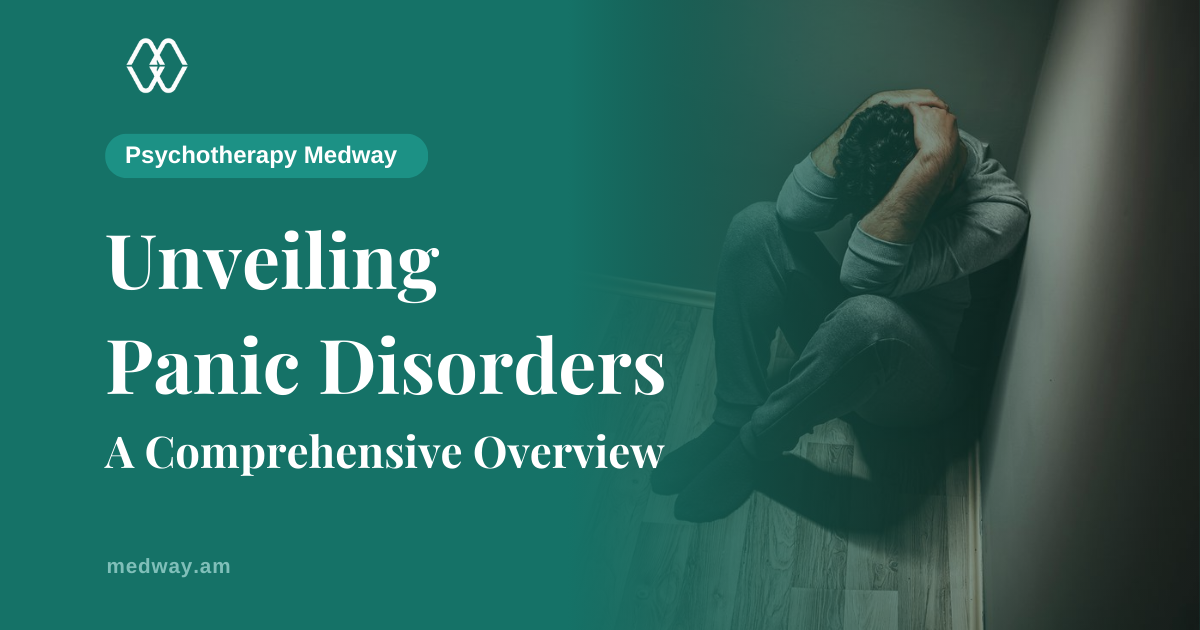
What is it?
Let's talk panic disorders, a unique anxiety breed marked by those unexpected panic attacks – bursts of intense fear and anxiety paired with physical symptoms resembling the body's fight-or-flight response.
Imagine the body gearing up for a real danger – heart racing, sweating, trembling – but here's the twist: it happens even when there's no actual threat. At the peak, there's this eerie feeling that the world has gone unreal. People wrestling with panic disorder might fret about everything from heart attacks to losing control or going "crazy."
Some folks face multiple panic attacks daily, while others get a breather for weeks or even months. The kicker? Panic attacks strike unannounced, even during sleep, keeping folks on edge, worried about the next surprise attack. The fear goes beyond the panic itself – it's the worry about embarrassing episodes or startling others that can lead to avoiding public places.
Meet Agoraphobia – the fear sidekick, making people dodge crowded spots, performances, or even public transportation. If this fear takes center stage, a doctor might add "agoraphobia" to the mix.
Why does panic disorder happen? Researchers are still figuring that out, but they suspect a brain pathway glitch in emotion regulation or an inherited "fight or flight" response cranked up a notch.
Genes play a role; close relatives of those with panic disorders are significantly more likely to join the panic party. Women double the odds compared to men, and it can strike at any age, with symptoms usually showing up around 25.
Life events can kickstart panic symptoms. Stress, especially in early life, might set the stage for panic attacks, though the exact triggers are still a bit of a mystery.
Here's a heads-up: panic disorders often bring along other mental health buddies. At diagnosis, over 90% of people with panic disorder also grapple with major depression, other anxiety disorders, personality quirks, or substance use.
Spotting a Panic Attack: Symptoms 101
How do you know it's a panic attack? Check for at least four of these symptoms: heart palpitations, sweating, trembling, breathing issues, feeling choked, chest discomfort, upset stomach, dizziness, a sense of unreality, fear of losing control or dying, numbness or tingling, and chills or hot flushes.
Between panic attacks, there's this lingering worry that another one's lurking. This fear can shake up a person's behavior or lifestyle to dodge the potential embarrassment of "losing control" in public.
Diagnosis Dilemma: Navigating the Journey
If you suspect panic disorder, a trip to your primary care doctor might be the first stop due to symptoms mimicking serious health issues. Panic attacks imitate conditions like heart disease or asthma, but medical tests usually come back normal. Questions about family history, anxieties, and daily habits help steer towards a potential panic disorder diagnosis, often leading to a mental health professional for a more in-depth evaluation.
The Long Haul: Living with Panic Disorders
Panic disorders can stick around if left untreated, but the good news is they're treatable. Proper care brings relief to many, and treatment can even make panic attacks less intense.
Facing the Enemy: Treatment Options
For those grappling with panic attacks, there are treatment options – medications and psychotherapy.
Antidepressants, despite the name, work well for anxiety. Selective serotonin reuptake inhibitors (SSRIs) like Prozac, Zoloft, and Lexapro are common choices. Fast-acting benzodiazepines might offer quick relief while waiting for antidepressants to kick in.
Cognitive therapy steps in as a nondrug approach, helping individuals recognize the irrational fears driving panic. Behavior therapies, like exposure to fear situations, respiratory training, and applied relaxation, can be effective. Often, a mix of medication and therapy proves most helpful.
When to Make the Call: Seeking Professional Help
If you experience panic attack symptoms without a previous panic disorder diagnosis, seek medical help pronto. The symptoms can mimic serious illnesses, and a comprehensive evaluation by a doctor is crucial.
Explore a diverse array of psychologists at Medway.
Brighter Horizons: Prognosis
The good news? With proper treatment, the outlook is promising. Between 30% and 40% of patients can become symptom-free for extended periods, while another 50% may experience only mild symptoms that don't significantly impact daily life. So, there's hope on the horizon for those navigating the world of panic disorders.